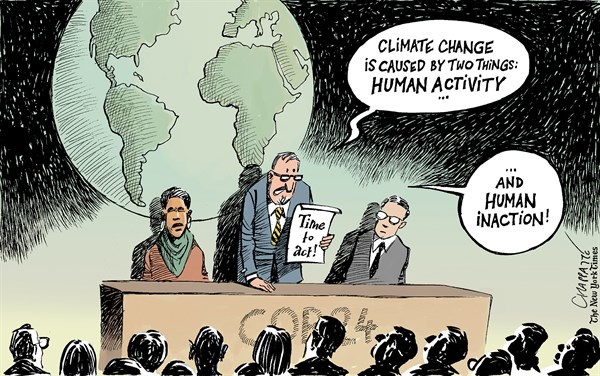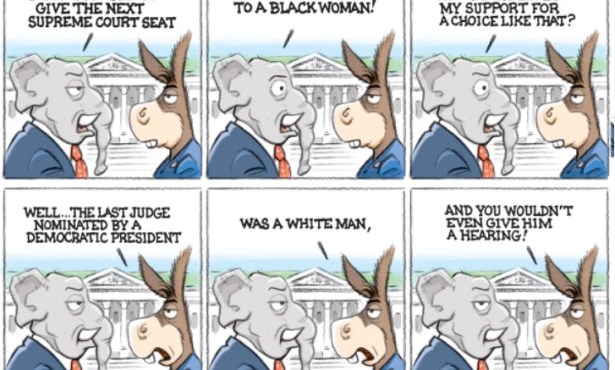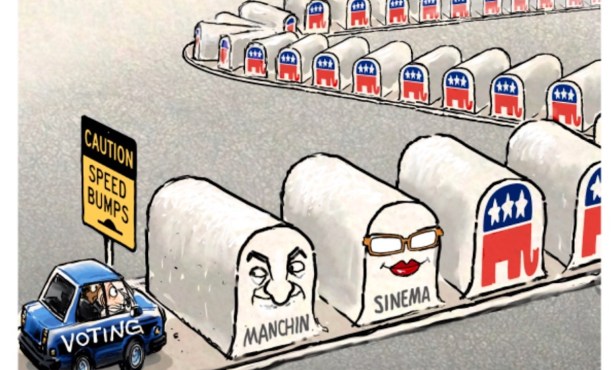Advocating for Mother Nature
We Are Now at a Critical Environmental Moment

I have been an environmental advocate/activist for the past 40 years working on such issues as stopping offshore oil drilling, preserving the Arctic National Wildlife Refuge (ANWR), ocean protection, bio-degradable alternatives to plastics and polystyrene, solar energy, electric and hydrogen vehicles (and fast EV chargers), sustainable hotels, used motor-oil recycling, endangered species protection and Native American environmental issues.
Because of climate change, I believe we are now at a critical environmental moment. Indeed the most critical of my life time. Ironically, the Trump administration’s #4 National Climate Assessment (which he said he doesn’t believe) said it best: “Time is running out” to correct a coming climate catastrophe.” Then, the March 15 worldwide student climate strike occurred offering hope that indeed there is a next generation of environmental activists to pass the baton to.
I was recently invited to give a talk at UCSB’s Bren School of Environmental Science & Management on environmental advocacy. In preparing the talk I realized it is important in “passing the baton” to also pass along those environmental techniques our generation has used and developed in defending Mother Earth.
Environmental advocacy is not just the technique of demonstrating, i.e., opposing such things as fracking, greenhouse gas emissions, etc. It consists of a methodology with a series of related techniques which need to be understood and mastered. I think it’s important for this next generation of activists to understand, incorporate, and expand on the techniques; which include the following:
Understand how to advocate before decision makers.
Environmental advocacy has become a bureaucratic process. Environmental campaigning requires analyzing/understanding the decision makers that need to be influenced. These can be commissioners in charge of permitting such things as mining and oil extraction; legislators with the power to enact or re-authorize environmental statutes, and/ or members of the public needed for grassroots support (to influence the decision makers).
All decision makers are busy; not necessarily well versed on the issues; some have “day jobs”; and they all have constituencies (labor, environmentalists, business, appointers — governor, Senate rules Pro Tem, Assembly speaker) which they rely on and answer to. All of their positions, and their constituents’ positions, need to be analyzed.
Most importantly, to be successful, decision makers will always need a context within which to assess data and evidence.
Understanding climate change as an advocacy context
Environmental advocates are at a disadvantage arguing about particulars out of context. Without a context there is nothing for decision makers to grab on to other than confusing competing facts which ensures they will end up relying on “talking points” developed by those interests they rely on. In this regard, climate change is a “game changer.” It is a context that embraces virtually every environmental issue from protecting threatened fresh water resources, drought management, oil and gas extraction, species decline, et al. It is a context that decision makers in this modern world of destructive fires, severe drought, and devastating storms are all aware of. It’s not “checkmate,” but it is powerful.
Developing a science-based White Paper
It is essential for advocates to develop a science based White Paper, think road map, used for talking points, fact sheets, distribution to decision makers, media, et al. For example, the following facts, in addition to climate change facts, should be documented and included in a Central Coast anti-fracking advocacy White Paper (WP):
· the U.S. is a net oil exporter
· fracking does not represent a sustainable energy future
· fracking, much like strip mining, to remain profitable must be consistently fed by the opening of new wells
· proposed fracking sites are adjacent to or near drinking water sources
· fracking requires pumping large amounts of water (1 million to 8 million gallons for each well into the ground)
· fracking requires as many as 600 toxic chemicals added to fracking water, many of which are carcinogens
· Central Coast surface and groundwater resources are not available for fracking
Coalition building is essential for effective environmental advocacy
Coalition advocacy is very effective. Decision makers, the public, and the media take them seriously. Advocates should identify which groups, including but not limited to environmental organizations, social justice organizations, labor and business groups, should be asked to join the specific coalition being developed. Strategies for recruiting respective advocates to the coalition need to be developed. A process for managing and directing the coalition’s advocacy must be employed.
Every advocacy plan has to have an earned media component
Earned (free) media has to be an integral part of environmental advocacy campaigns. This includes approaches to mainstream national media, local media, social media, podcasts and blogs.
As serious as environmental problems have become, achieving mainstream national media attention, unless it is for something like the worldwide March 15 youth climate strike or Alexandria Ocasio-Cortez’s New Green Deal, will, in this political climate, be difficult to achieve. Social media (Twitter, Facebook, Instagram et al.), podcasts, blogs and local issues on the other hand are entirely different things. They are all readily accessible to environmental advocates.
In approaching their media campaigns, advocates must develop social media approaches, including using social media to organize turnout for hearings. When possible, podcasts and blogs should be used. Authors for letters to the editors (LTEs) and op-eds need to be cultivated. Editorial board visits need to be scheduled. “Hooks” in the form of celebrities and or coalition announcements need to be developed for press conferences. Reporters need to be cultivated.
In approaching media campaigns advocates must understand that reporters, like decision makers are busy, often overworked, and will not necessarily know the issues; often rely on point-counterpoint formats (getting a quote from opponents, along with responsive quotes from proponents) rather than analysis and factual presentations; and have their own constituencies to respond to along with their own biases.
The courts, legislatures, and ballot measures
Environmental law firms need to be cultivated. Litigation has become an essential tactic in the fight over Earth’s resources. Endangered species, through the Endangered Species Act (ESA), can become effective representatives for the environment. Reliable environmental legislators are in place. They too need to be cultivated. And, when all seems lost, a ballot measure can, as it did in stopping the development of 60-100 oil wells across from the Will Rogers State Beach in Pacific Palisades, succeed.
Time as a technique
Time is an obvious technique. Two examples: the Huntington Beach’s proposed 50 million gallon a day desalination plant is in its 21st year of permitting. Coastal commissioners, the governor, the Pro Tem, and the Speaker of the Assembly have all changed, causing changes in advocacy techniques. In this “Time of Trump,” litigation opposing fracking on the Central Coast could delay approvals until after the possibility of a 2020 change of administrations.
Ethics
All environmental campaigners should consider the ethical implications of their actions. They should believe in what they are doing, not engage in name calling, or do anything just to win.
Well Next Generation, the baton is yours. Trust Nature, she will help you!



